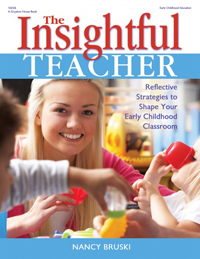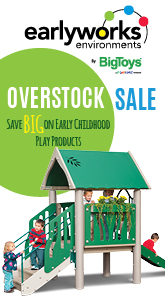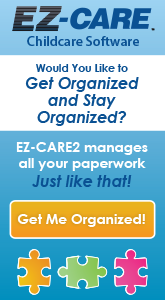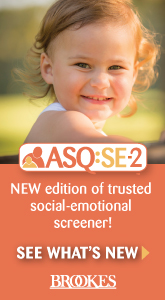ExchangeEveryDay Past Issues
 << Previous Issue
| View Past Issues | | Next Issue >>
<< Previous Issue
| View Past Issues | | Next Issue >> -Piero Ferrucci, from his book, The Power of Kindness
In her book The Insightful Teacher, Nancy Bruski offers this insight about sharing in the preschool classroom:
"It is necessary for young children to learn how to cooperate in the use of classroom materials; however, sharing often involves giving up what one has so that someone else can have it, and this is very difficult for young children. Children become attached to things they invest themselves in, whether it be toys, materials, ideas for play, or being the first in line. Sharing is challenging and something that is learned slowly.
"Some children seem to have an easier time sharing than others, but the child who is more possessive is not being bad or difficult. Wanting to keep the teacher's attention or to play with the favored red fire truck is normal on the part of children, and their feelings should be treated as such.
"Our early childhood program found a solution to this type of problem that worked extremely well...If a child chose something to play with in the classroom, he could keep it as long as he wanted, even if he played with it during the entire free-choice time. If he needed to go to the bathroom and was not finished playing with the toy, he could ask the teacher to watch it for him, so that no one else could play with it. However, if a child left a toy or play material to go to another part of the room and do something else, then the toy or material was open for anyone else to play with."
 Emphasizing essential interpersonal skills that should be developed in early childhood, this guide offers a holistic approach to developing classroom communities in which each child feels recognized, appreciated, and able to contribute. Taking into account a teacher's goals, values, strengths, and weaknesses, guidance is offered for adjusting and planning for developmentally appropriate expectations, classroom organization, and communication with families. Filled with concrete examples and effective approaches to common classroom problems, this detailed handbook provides positive strategies for handling unwanted behavioral challenges. By individualizing the needs of each student using the methods espoused in this handbook, educators will cultivate a supportive classroom setting based on emotional expression and conflict resolution.
Emphasizing essential interpersonal skills that should be developed in early childhood, this guide offers a holistic approach to developing classroom communities in which each child feels recognized, appreciated, and able to contribute. Taking into account a teacher's goals, values, strengths, and weaknesses, guidance is offered for adjusting and planning for developmentally appropriate expectations, classroom organization, and communication with families. Filled with concrete examples and effective approaches to common classroom problems, this detailed handbook provides positive strategies for handling unwanted behavioral challenges. By individualizing the needs of each student using the methods espoused in this handbook, educators will cultivate a supportive classroom setting based on emotional expression and conflict resolution.




Comments (2)
Displaying All 2 CommentsFair Oaks, California, United States
What worked in my classroom was for a child who wanted a turn to ask,"Can I have a turn when you're done?" The child who was playing with the toy often gave it to the child who wanted a turn within minutes.
Loving & Learning Center
Guerneville, CA, United States
We also allow children to keep toys as long as they need/want them; I first learned this at a Bev Boz conference years & years ago. But we also use it as a learning opportunity for socialization: The child who wants the toy asks "When you're done can I have a turn?" And the other child must always answer "Yes (when I'm done you can have a turn)" This response sometimes takes a little coaching because kids are always expecting to have to give up their toys too soon... they often don't understand sharing when they're done. But this second step really works and makes both kids feel happier!
Post a Comment